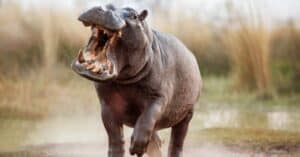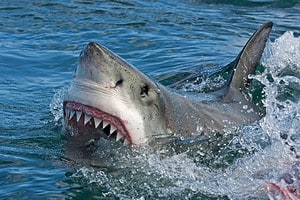Continue reading for our analysis...
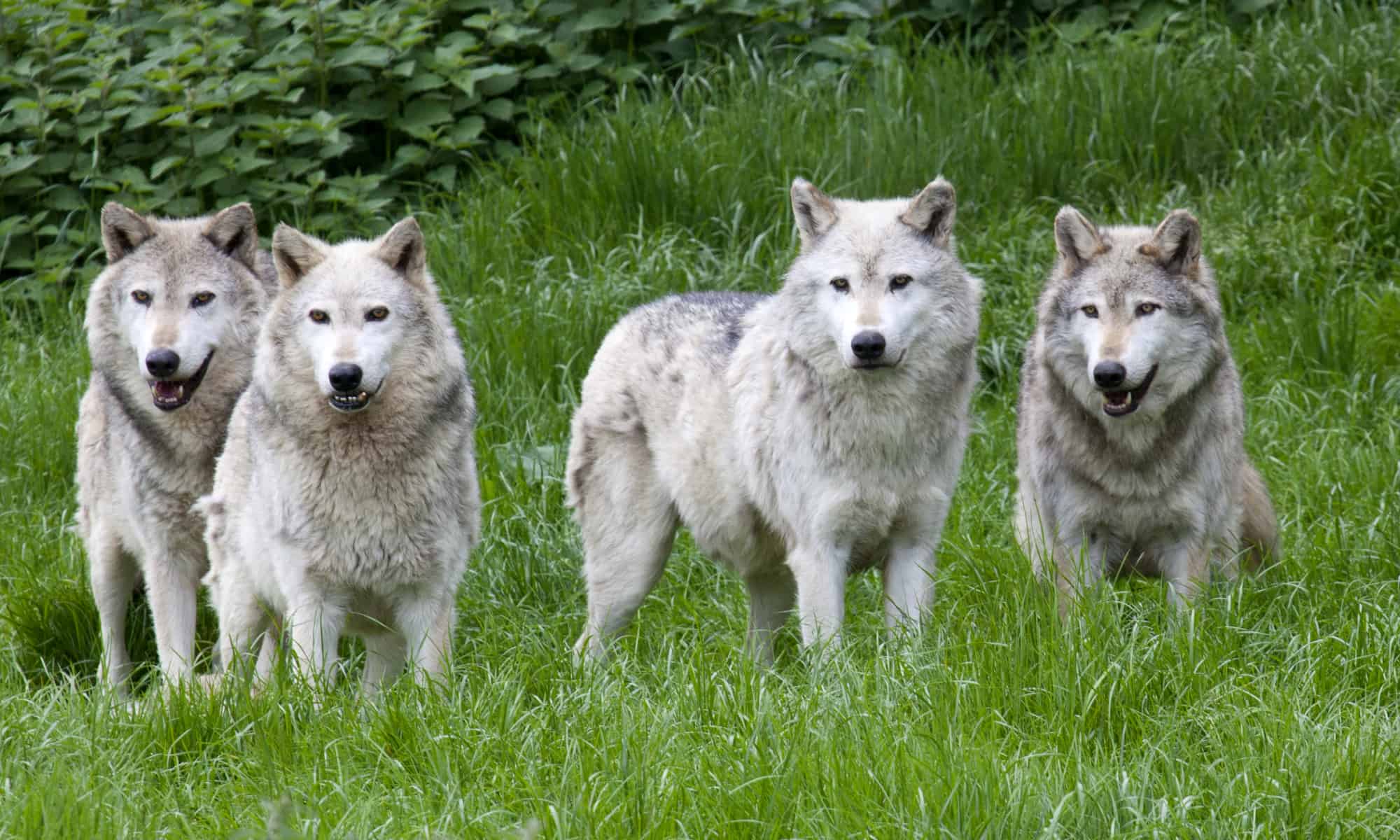
Key Points:
- You normally wouldn’t call a grizzly bear prey, but they can be when a full pack of wolves gets involved, as can be seen in this video.
- A grizzly can and will hold its own against insane odds if food is scarce enough.
- In general, these animals avoid each other and their territories.
BrushBuck Wildlife Tours is the largest Yellowstone tour company that has been in operation for over a decade. In the video below, the tour guide, Daniel Bradford, captures a common scene during an unusual time.
The video was taken on December 29, 2019, when grizzlies are usually hibernating. However, the grizzly in this video decided to stay awake, alert, and hungry. As the video starts, you can hear a crowd murmuring behind the tour guide.
In the center of the scene, you can see a massive grizzly atop what looks like a rather recent kill. The white snow has turned to a dark brown and red mess beneath the grizzly’s paws as it brushes the snow around the carcass.
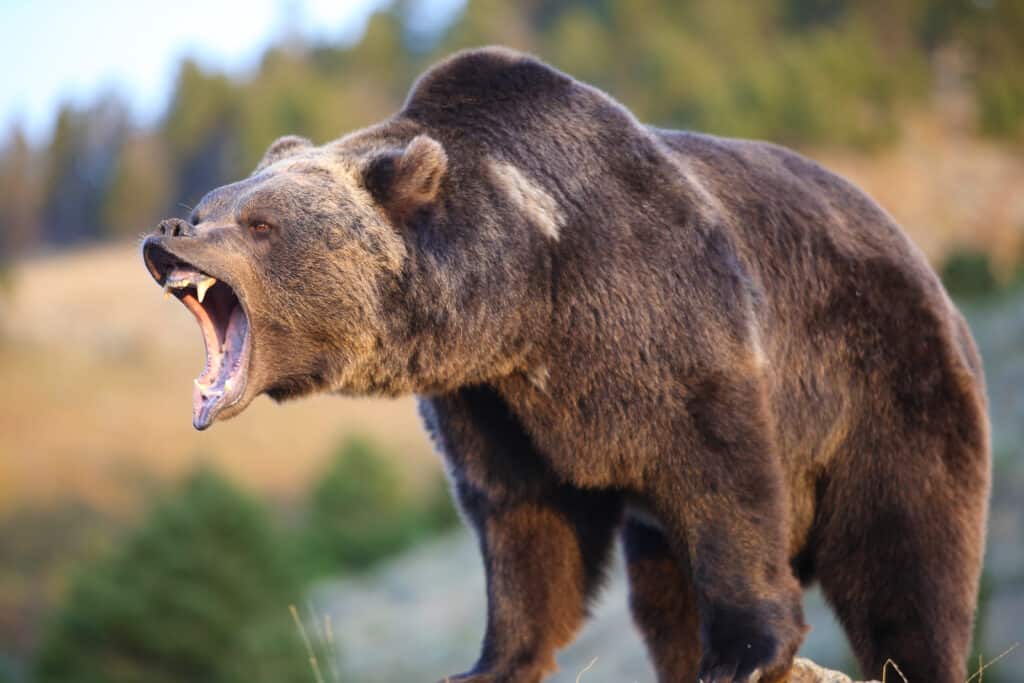
A full-grown grizzly bear is just about the largest beast on the continent.
©Dennis W Donohue/Shutterstock.com
A few wolves can be seen on either side of the bear, walking about as if also interested in what the bear is pawing at. It’s not apparent at first, but this grizzly is taking something that doesn’t belong to it.
The Junction Butte Wolf Pack has previously taken down this elk, and the grizzly has come in to lay claim over the carcass. Understandably, the wolf pack wants what’s theirs.
At first, you can only see a few wolves trying to approach. The grizzly starts defending the carcass as if it belonged to it all along. It charges at several wolves and spins in circles, attempting to defend itself from every angle.
More wolves appear on the scene in the blink of an eye, and suddenly, this grizzly is working against a pack of five, then 14, wolves at once. Although outnumbered, this grizzly’s hunger is much stronger. It keeps its stance over the carcass, even though the wolves are circling all around it.
It bites and lunges at any wolf that gets too close. Different wolves try sneaking toward it, but none of them are willing to fight the grizzly for the elk’s carcass.
The grizzly lunges at the wolves a few more times before the wolves collectively decide to accept their loss. They begin walking away from the grizzly and from the prey they’ve managed to kill as the grizzly remains atop the carcass, gathering snow on top of it the way a cat gathers litter on top of its waste.
In Yellowstone, about 80% of wolf kills are stolen by grizzlies. Even when it was supposed to be time for bear hibernation, this wolf pack had to take another loss.
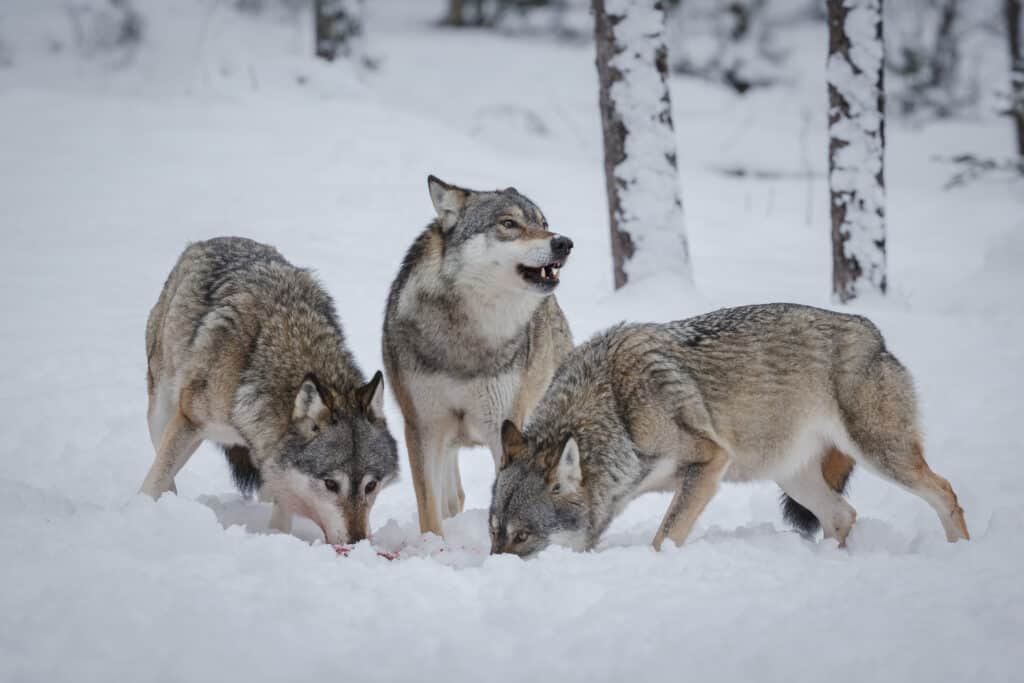
Hunting as a pack, wolves can often — but not always — take down prey much larger than them.
©iStock.com/Neil_Burton
Is This Normal Behavior?
Bears are not typical everyday dinners for wolves; they seem to have mutual respect for each other and don’t want to engage in a fight that might cause injury to themselves. However, wolves will attempt to take down a grizzly if they have the number and they are hungry or desperate enough. Moreover, wolves will tend to attack very young, lame, or old bears rather than healthy bears.
Wolves’ and bears’ normal behavior has them mutually avoiding each other and their territories. These two species of animals hope to find easier prey or scavenge for the remains of other killed animals.
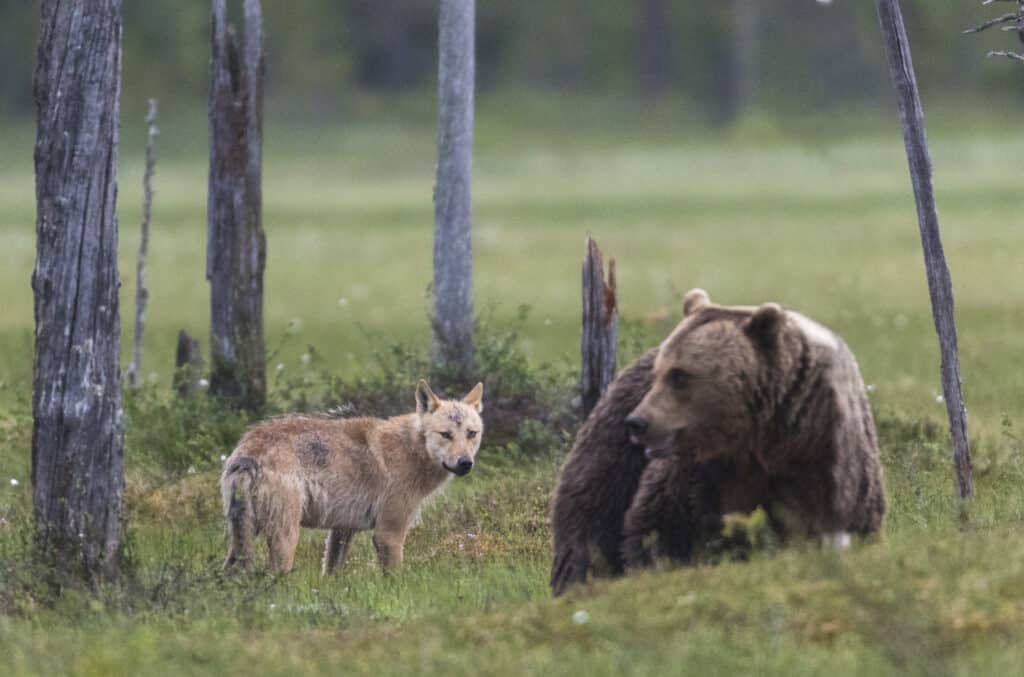
Wolves and bears typically do not engage in fights and usually avoid each other.
©iStock.com/Mats Lindberg
Where Do Grizzly Bears Live?
Yellowstone National Park is not the only place you might encounter a grizzly bear. They are known to inhabit the tundras and forests of Alaska, Washington, Wyoming, Idaho, Montana, and Western Canada. Their population once included a much wider region of North America, but deforestation has caused many grizzlies to lose their homes, though they are not endangered today. Some species of grizzly did face complete extinction, such as the California Grizzly and Mexican Grizzly.
Overall, grizzly bears prefer to live in areas with plenty of foliage and berries, as well as streams and rivers from which to catch fish and take baths. While many believe that grizzlies enjoy living amongst the trees based on their skillful climbing, grizzlies are not actually as agile as they have often been portrayed, only climbing trees out of “bear” necessity when chasing prey, and for periods not much longer than a minute.
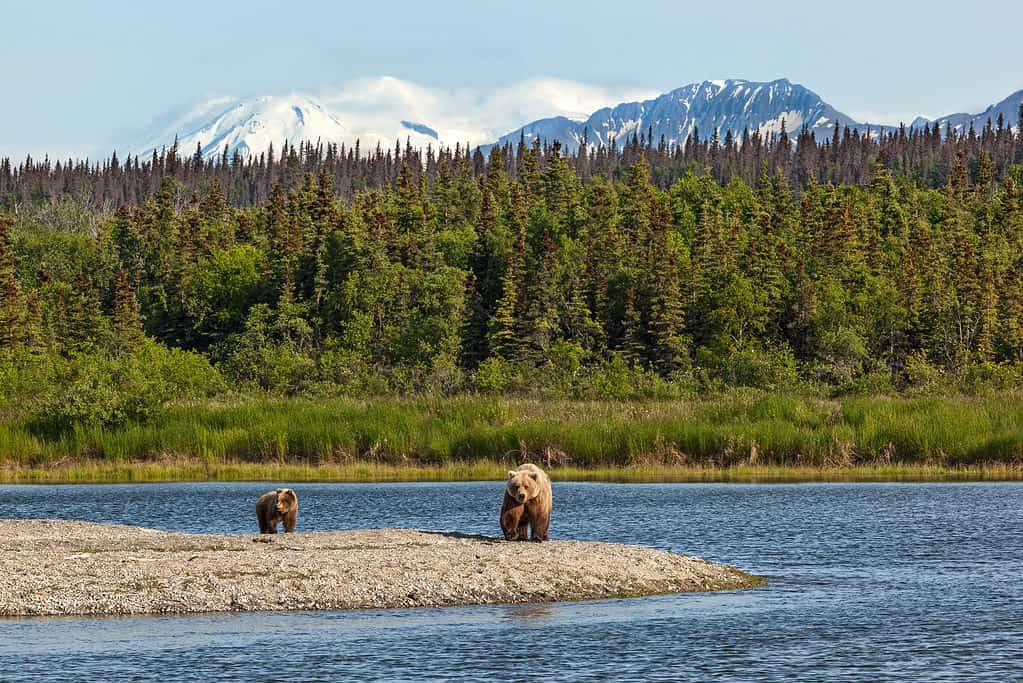
Grizzly bears can be found in Alaska, including in Katmai National Park.
©Manamana/Shutterstock.com
How Long Do Grizzly Bears Live?
Most grizzly bears live anywhere from 20 to 25 years in the wild. They are not considered to be fully grown until they reach the age of 8-10, with their mothers protecting them for the first year or two outside of the den where they’re born.
The oldest known grizzly bear lived to be an astonishing 56 years old! This resilient creature named Brownie resided at the Kansas Sunset Zoological Park for the last 42 years of its incredibly long life. Brownie died in 1968.
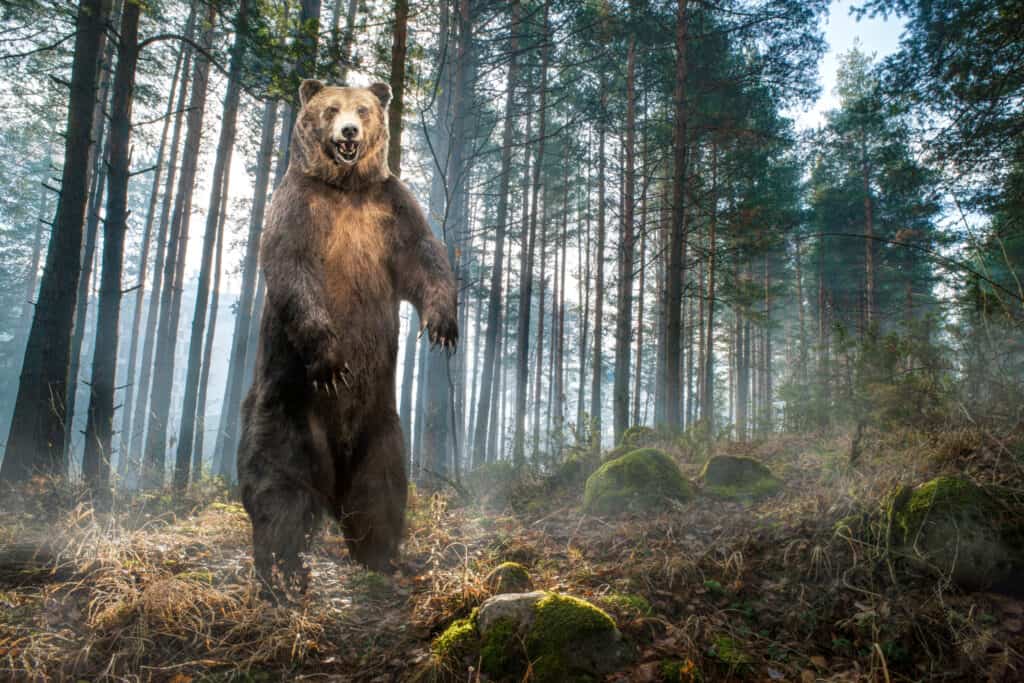
A typical grizzly bear lives about 20-25 years in the wild.
©Degimages/Shutterstock.com
Grizzly Bear Vs. Wolf
While grizzly bears and wolves are both some of nature’s fiercest predators, the video below makes it clear that in the end wolves are capable of overpowering the mighty grizzly. This is partly due to the fact that wolves are pack-dwelling creatures, meaning they travel together and abide by a strict social structure. Bears, on the other hand, tend to prefer solitude except in the case of a mother protecting her young cubs. Because of this, the wolves are able to utilize teamwork in order to easily overwhelm the lone bear.
While it might seem like speed would be a decisive factor in determining the outcome of a grizzly vs. wolf battle, both creatures possess relatively equal maximum speeds of approximately 35 mph, with some wolves being able to push up to 37 mph.
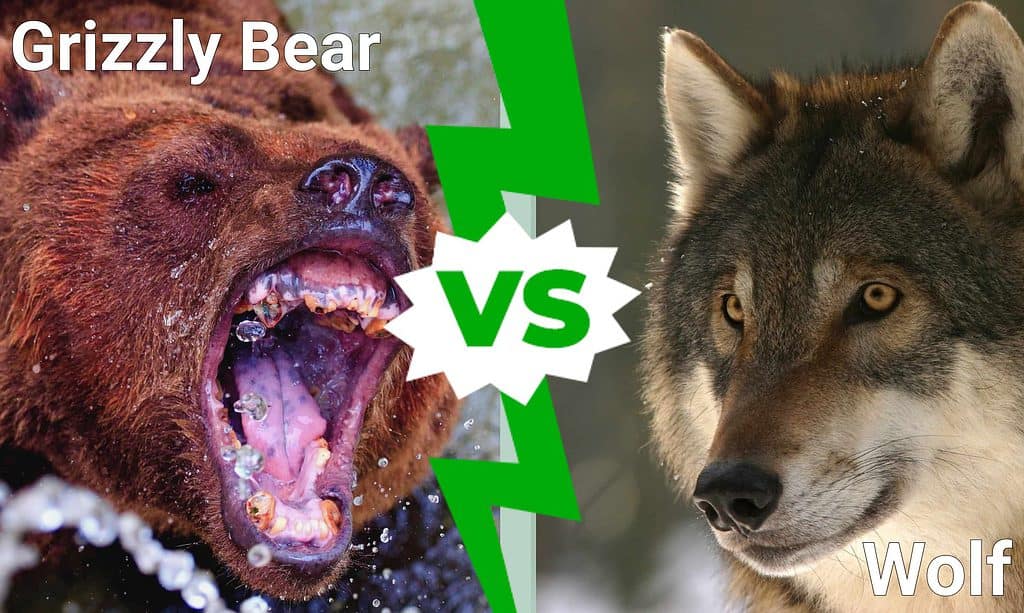
Thank you for reading! Have some feedback for us? Contact the AZ Animals editorial team.




